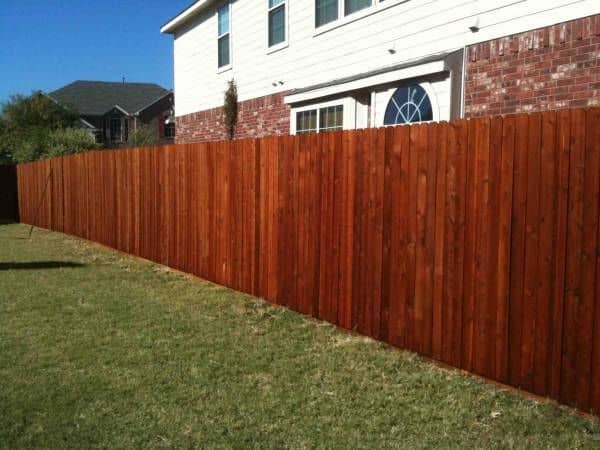How to Pick the Right Fence Discoloration for Your Residential Or Commercial Property
When it comes to enhancing the look and durability of your home's fence, picking the best tarnish is a crucial decision that requires careful factor to consider. Just how can you guarantee that you select the excellent fencing tarnish that lines up with your residential or commercial property's style and upkeep demands?
Understanding Timber Types
To pick the suitable fence discolor, it is necessary to have a thorough understanding of the various types of timber commonly utilized for secure fencing. When picking a fencing discolor, it is vital to consider the type of wood being used to guarantee compatibility and optimum security. Understanding the characteristics of various wood kinds will help you make an informed decision when it comes to choosing the right fencing tarnish for your building.
Selecting the Right Shade
Selecting an ideal shade for your fencing tarnish is a critical choice that dramatically affects the overall aesthetic appeal of your building. The color you choose need to match the design of your home, blend sympathetically with the surroundings, and show your personal preference. When choosing a shade, take into consideration the existing shade combination of your residential or commercial property. For a natural appearance, earthy tones like browns, greens, or grays function well. These colors can help the fence mix into the landscape and develop a cohesive appearance. If you prefer an even more contemporary or vibrant appearance, think about selecting darker tones like black or deep charcoal for a striking comparison. Lighter colors such as whites or light grays can make a fencing appear larger and include a touch of style to your property. Inevitably, the appropriate shade choice will certainly enhance the beauty of your fence and elevate the overall visual charm of your home.

Thinking About Openness Levels
When selecting the best shade for your fencing stain, an additional crucial facet to take into consideration is the level of transparency you could check here that will ideal suit your residential or commercial property's visual and upkeep needs. Openness degrees in fencing discolorations usually fall into three categories: clear, semi-transparent, and solid. Consider the level of exposure your fencing encounters, the wanted maintenance regularity, and the visual you wish to achieve when choosing the appropriate transparency level for your fence discolor.
Assessing Maintenance Requirements
Thinking about the long life and maintenance of your fence, assessing the maintenance demands is critical in establishing the most suitable fencing tarnish for your residential or commercial property. The degree of upkeep required for your fence can differ depending upon aspects such as the kind of timber, climate problems in your location, and your individual choices.
When evaluating upkeep needs, it is important to consider the resilience of the fence discolor. Some spots need more constant reapplication than others, so choosing a stain with a longer life-span can aid lower the overall upkeep demands of your fencing (Fence Staining). In addition, factors such as resistance to UV rays, water, and mildew can impact just how commonly you require to re-stain your fencing

Checking Examples Prior To Application
Before applying any kind of fencing stain, it is recommended to conduct example tests to ensure compatibility with the wood and preferred aesthetic end result. Checking samples enables you to evaluate how the tarnish will certainly communicate with the certain type of timber utilized in your fencing, as different woods can absorb spots in a different way. To begin, pick a tiny low-profile area of the fencing to apply the tarnish samples.
Verdict
Finally, choosing the ideal fence stain for your residential property includes understanding the wood type, choosing the ideal color, thinking about transparency levels, evaluating upkeep requirements, and testing examples before application (Fence Staining). By taking these aspects right into consideration, you can make certain that your fence tarnish complements your building while offering the needed protection and longevity. Make a notified choice to boost the appearance and long life of your fencing